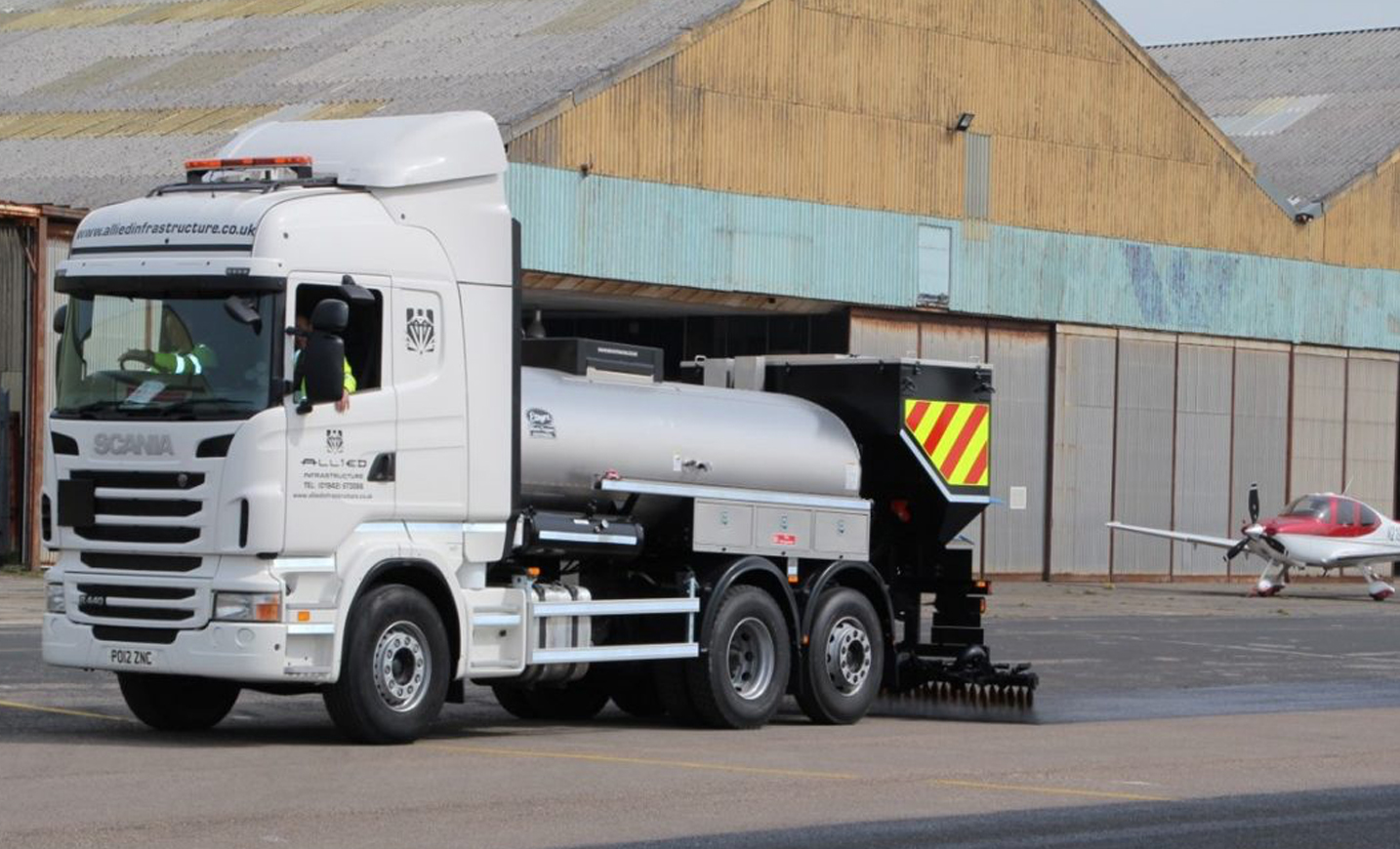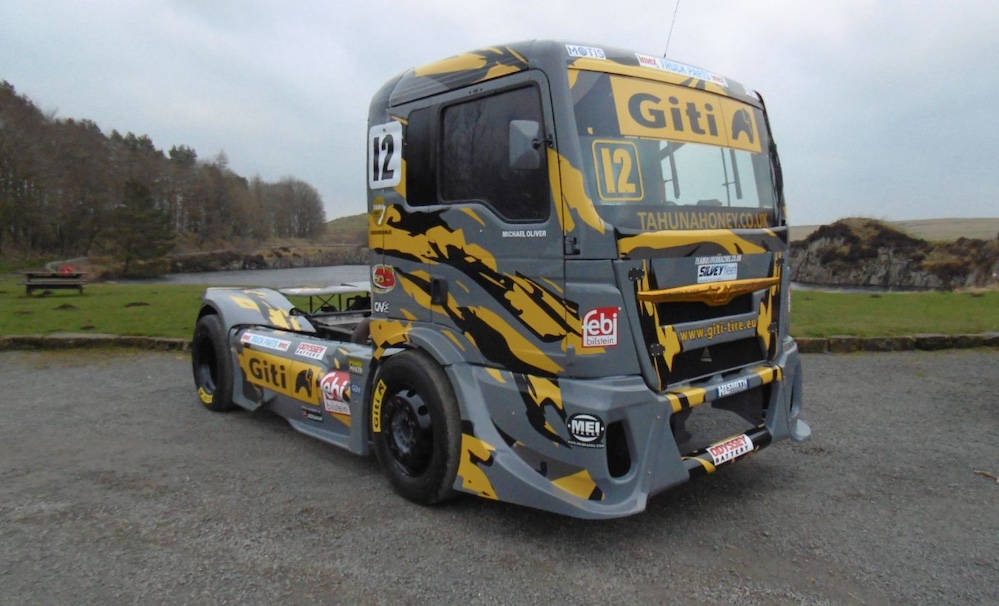Potholes can put huge strain on a vehicle’s tyres, suspension and shock absorbers, and they can sometimes cause accidents. But the holes are expensive to fix, and repairing them often involves shutting down large stretches of roads, causing problems for road users.
One approach to solving the problem is a material called Rhinophalt. Originally developed for the quick and long-lasting repair of airport runways, it is increasingly being used to fix highways.
Independent tests have found that a single spray of Rhinophalt extends the life of an asphalt surface by three to five years, depending on original road quality. It works by sealing the surface to protect it against sun and water damage, which cause the bitumen in the road to crumble into dust, giving rise to potholes.
Driving at 8 km per hour
UK-based Allied Infrastructure specialises in this work, and bought a second-hand Scania R 440 for the job.
According to Ian Jones, the company’s Managing Director, the three-year-old truck had more than 480,000 kilometres on the clock when it was bought, but, “For the job we use it for, it won’t be doing many more miles.”
That’s because the truck has to drive at a steady ‘running pace’ of just eight kilometres per hour, so that the spraying process is consistent and even.
Specialist retrofitting
It may not do many miles now, but the truck had an epic journey to be road-ready, with undercover secrecy, special customs declarations and low bridges along the way. The truck had to be retrofitted with specialised spraying equipment, and Ian’s retrofitter of choice is in the US state of Illinois. (He won’t say who, as he wants to keep the identity secret from his competitors – that’s also why our photo of the truck only shows it from the front and why Allied camouflage the truck when it is out on the open road).
The truck was shipped from Liverpool to the US port of Norfolk, around 5,000 kilometres away. “We were recommended for this particular job due to our customs clearance expertise,” says Derek ‘Del’ Griffiths, Project Manager of shipping agents Tuscor Lloyds, who handled the assignment.
As the cargo would be returning to the UK after its retrofitting, Tuscor Lloyds liaised with UK Customs to complete the paperwork to allow the truck’s entry back into the UK as a temporary export. And before the Scania truck reached the Port of Norfolk, Tuscor Lloyds’ US agents arranged specialist low-loader transport because the truck was not technically road-legal in the United States.
Caution: Low bridges
Even then, there was another issue. “The driver in the US contacted us to say that the load was too high for bridges in two of the states on its journey to Illinois and back. So the roof air deflector had to be taken off and the wheels had to be dropped,” explains Ian.
The truck also needed a suitable power take-off (PTO) installed so that it could run the hydraulic system for the sprayer tank. A local UK Scania dealership did that job, which involved a costly and complicated vehicle software update.
“The vehicle has a semi-automatic gearbox – a gearbox-mounted PTO – and Scania at Haydock fitted this for us. Andy Duncan, the manager of the dealership, was brilliant. We had excellent service from them,” says Ian.
A happy customer
With the retrofitting, the new PTO and the transportation, plus the cost of the truck itself, Ian reckons he has spent nearly £250,000 (€290,000), but he is happy.
“I always wanted a big Scania. I can’t even drive a truck, but I’ve always loved them. I wanted a bull-nosed Scania, but it wouldn’t find in the car parks!”







